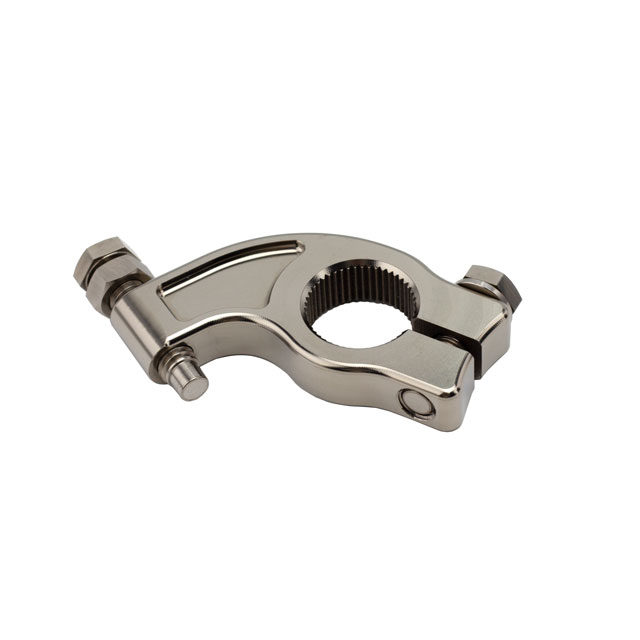Three Surface Hardening Treatment Methods Of Titanium Alloy
Time:2023-04-19
View:131
Three Surface Hardening Treatment Methods of Titanium Alloy
1. The purpose of titanium surface hardening is to improve wear resistance and eliminate the risk of parts working under friction conditions sticking to each other. While the hardness is improved, it is possible that the corrosion resistance and fatigue strength have also been improved. Here we first pay attention to the improvement of surface hardness, and pay attention to the process itself and its impact on the improvement of surface hardness. It has been found that there is a duplex treatment method based on oxidation, which can generate the best hardened layer on Ti-6Al-4V. This enhanced/diffused oxidation treatment (BDO) can generate a thick subsurface layer to strengthen the thin surface wear-resistant thermal oxidation (TO) layer. The process was developed by the company, and it is similar to the vacuum carburizing treatment of steel. The required added element, here oxygen, forms a high-concentration surface layer with a large potential energy, and then diffuses it into the matrix under vacuum. After processing in accordance with this requirement, the resulting hardened layer is the exact C-shape, and this hardened layer cannot be generated by ordinary diffusion treatment. TO treatment forms a thin layer of “rutile” (as opposed to the “eight-sided stone” form) titanium oxide (TiO2) layer, and there is also a narrow oxygen diffusion zone. The surface layer has good friction resistance, but it needs thicker BDO low lining support to withstand greater stress loads.
2. Titanium reacts with oxygen, nitrogen and other gases at high temperatures, causing hardening. At high temperatures (800-900 degrees), it is nitrided to make its surface Vickers hardness as high as 700 or more; through surfacing, an appropriate amount of nitrogen or oxygen is added to argon to increase its surface hardness by 2-3 times; through ion electroplating, a layer of titanium nitride is generated on the surface, with a thickness of about 5 microns, and the surface Vickers hardness is as high as 16000-20000; chrome plating, etc. This should be carried out in a furnace with a pressure-protecting atmosphere and well controlled. It can easily change the gas composition at the end of the treatment to generate a uniform non-porous rutile layer. The result is similar to the TO process treatment. In this way, it performs duplex processing in a one-step manner, not to mention a three-step process like the BDO/TO combination processing, which significantly saves energy. This process only uses completely inert gases-argon and oxygen, so it is very environmentally friendly, non-toxic, and will not cause the global greenhouse effect. Although the process is very good, the vacuum treatment is expensive, and there are obvious control problems in the oxidation/diffusion two-step treatment. Even if the diffusion time in a vacuum is fixed, a small change in the oxide content formed in the first step will cause a significant difference in the final hardness distribution. This process is completely dependent on empirical control.On the other hand, in the process of gas diffusion, for example, the oxygen potential can be directly controlled by the zirconia electrode, thereby relatively simply forming the desired stable distribution curve shape. Therefore, another alternative method has been discovered, which is more similar to gas carburizing treatment. An element, namely oxygen, will be added to form a controllable potential energy source in the form of a gas to control the treatment process.
3. Titanium alloy carburizing generates a TiC phase on the surface, which has a very high hardness. However, the binding force of the TiC layer and the substrate is very poor, which hinders actual use. Boron infiltration on the surface of titanium produces the TiB2 phase, which is also very hard.According to literature reports, the pickled titanium parts are embedded in a mixed powder of amorphous boron powder and A1203 powder (which is added with 0.75%-1.0% NH4F*HF), and kept warm at 1010 degrees for 1 hour to generate a TiB2 layer. Under the above conditions, the thickness of the coating varies depending on the alloy. The thickness of the coating generated on industrial pure titanium is 25p, and the thickness formed on TC4 titanium alloy is 20um, and the hardness is in the range of HV2800-3450. The temperature requirements of boron infiltration are high, which restricts its application. If the iron is electroplated on the titanium plate first and then borized, the borization temperature can be reduced to 870 degrees, the coating thickness can reach 40um, and the hardness can reach HV2300. Since titanium also reacts with nitrogen, argon must be used as a carrier. If an oxygen/nitrogen mixed gas (air) is used as the oxygen source, sufficient nitride will be formed at the diffusion temperature of oxygen (about 850℃), which will reduce the diffusion of oxygen. In order to optimize the depth and distribution of the oxygen diffusion layer, the concentration of oxygen needs to be high enough to produce the maximum diffusion rate. However, it cannot be as high as to form a continuous surface oxide film. It is reported that it will block diffusion.




